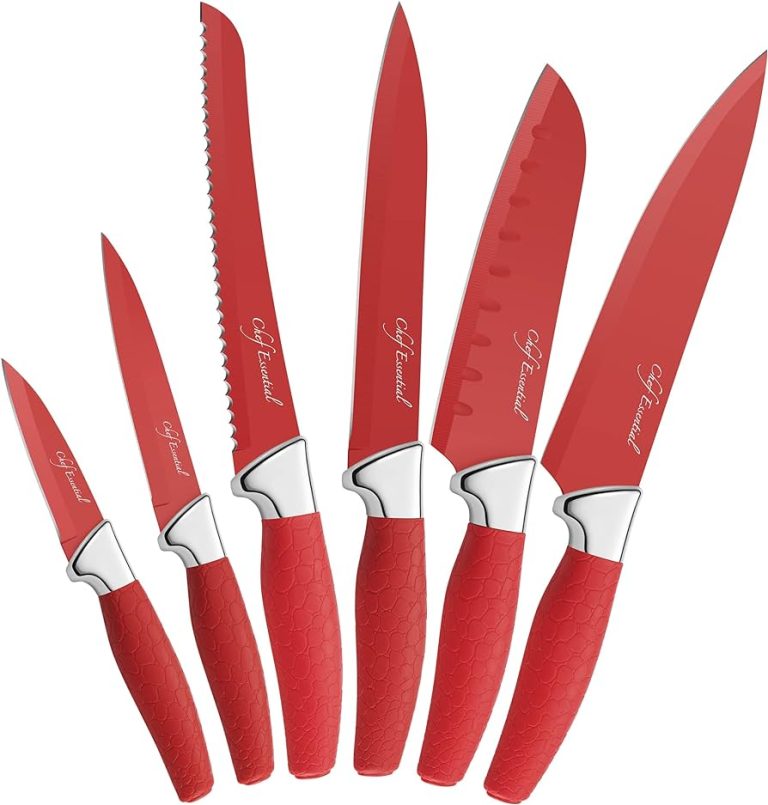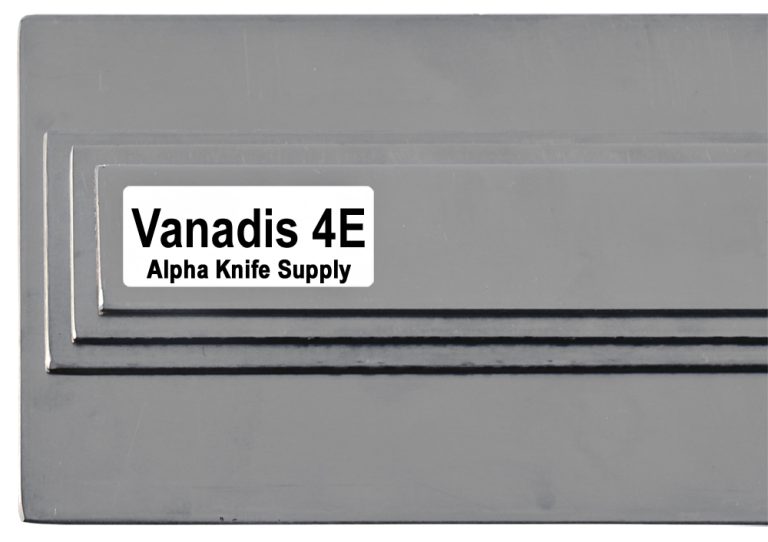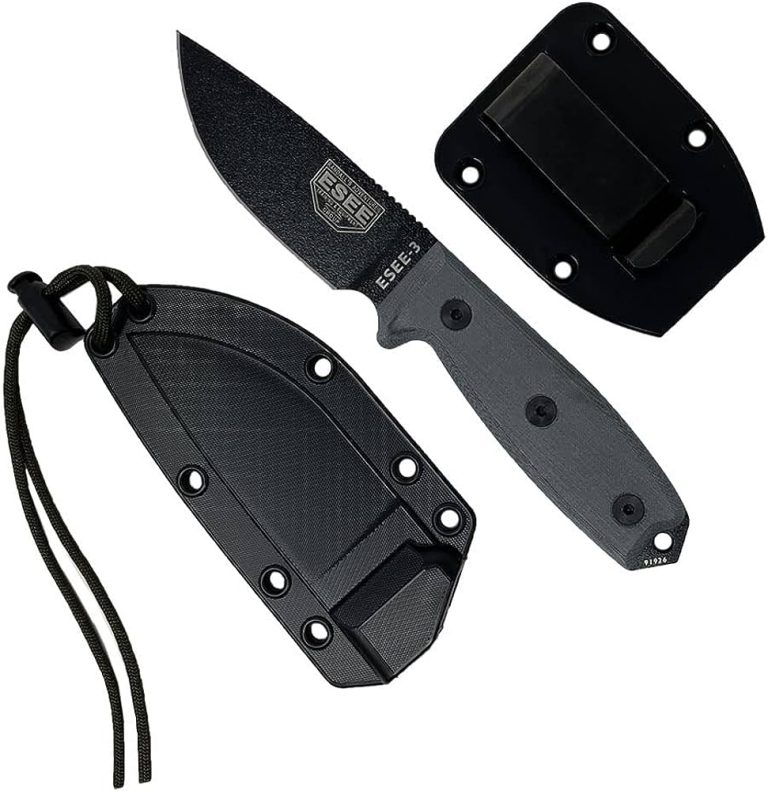How to Choose the Best Bushcraft Knife?
To choose the best bushcraft knife, consider its durability, blade material, size, and handle design. When selecting a knife for outdoor activities like bushcraft, it’s essential to prioritize its durability, as it will be subject to tough use and various environmental conditions.
Blade material is another critical factor, with options like stainless steel offering high corrosion resistance and carbon steel providing excellent edge retention. Additionally, consider the knife’s size, as a shorter length may provide better control for detailed tasks, while a longer length offers versatility for various tasks.
Lastly, assess the handle design for a comfortable grip that minimizes hand fatigue during extended use. By considering these key factors, you can choose the best bushcraft knife for your outdoor needs.
Factors To Consider
When choosing the best bushcraft knife, there are several factors to consider. The blade material is an important consideration as it affects the durability and performance of the knife. High-quality materials such as stainless steel or carbon steel are commonly used for their strength and resistance to corrosion. The blade length is another aspect to think about, as it determines the knife’s versatility and functionality. A longer blade provides better reach and chopping power, while a shorter blade offers greater control and precision. The knife design is also crucial, as it affects the ergonomics and comfort during use. A well-designed knife with a comfortable handle and a secure grip is essential for safe and efficient bushcraft activities. By carefully considering these factors, you can choose the best bushcraft knife that meets your specific needs and preferences.
Understanding Blade Materials
When choosing the best bushcraft knife, it is essential to understand the different blade materials available. One popular choice is stainless steel blades. These blades are known for their corrosion resistance, making them ideal for outdoor use. They require minimal maintenance and are easy to clean. Stainless steel blades also offer good edge retention and durability, ensuring that your knife stays sharp and reliable.
Another option to consider is carbon steel blades. These blades are known for their excellent edge retention and are easy to sharpen, making them ideal for cutting and carving tasks in the wilderness. However, carbon steel blades are more prone to corrosion and require regular oiling and maintenance to prevent rusting. They offer exceptional strength and are capable of withstanding demanding tasks.
Ultimately, the choice between stainless steel and carbon steel blades depends on your specific needs and preferences. Both options have their advantages and disadvantages, so it’s important to consider factors such as corrosion resistance, edge retention, ease of maintenance, and overall performance when making your decision.
Determining The Ideal Blade Length
When choosing the best bushcraft knife, determining the ideal blade length is an important factor to consider. The blade length plays a crucial role in the knife’s performance and functionality. A longer blade length provides better reach and leverage, making it suitable for tasks like chopping and slicing. On the other hand, a shorter blade length offers enhanced control and precision, making it ideal for detailed work and intricate tasks.
When selecting the blade length, it is important to assess the intended use of the knife. For general purpose tasks, a blade length of around 4-6 inches is typically suitable. For more heavy-duty tasks, a longer blade length of 7-9 inches may be preferred. Additionally, considering your own hand size and grip will help determine the most comfortable and suitable blade length for you.
Overall, the ideal blade length for a bushcraft knife depends on the specific requirements and preferences of the user. By considering the tasks you’ll be performing, hand size, and personal comfort, you can choose a bushcraft knife with the perfect blade length to meet your needs.
Evaluating Knife Designs
A bushcraft knife is a vital tool for outdoor enthusiasts, but it’s crucial to choose the right design that suits your needs. Two key factors to consider are the tang type and the blade style.
| Tang Type | Blade Style |
|---|---|
| Full Tang | A full tang knife has a blade that extends the entire length of the handle, providing maximum strength and durability. It offers better weight distribution and is ideal for heavy-duty tasks. |
| Partial Tang | On the other hand, a partial tang knife has a blade that doesn’t extend the full length of the handle. While it may be lighter and more compact, it may lack the same level of strength and stability as a full tang design. |
| Fixed Blade | A fixed-blade knife is a solid, one-piece construction that offers reliability and strength. It is highly preferred for demanding tasks and survival situations as it doesn’t have any moving parts that could potentially fail. |
| Folding Blade | A folding blade knife provides portability and is easier to carry. It comes with a hinged blade that can be folded into the handle, making it safer and more convenient for everyday carry. |
Consider your specific requirements and intended use to determine whether a full tang or partial tang knife, as well as a fixed blade or folding blade design, would work best for your bushcraft activities.
Testing The Knife’S Durability
Testing the Knife’s Durability:
Assessing the Knife’s Strength: Evaluating the Knife’s Sturdiness
When choosing the best bushcraft knife, it’s essential to test the knife’s durability. This involves assessing its strength and sturdiness. A durable knife is crucial for outdoor enthusiasts as it needs to withstand tough conditions and tasks. To evaluate the knife’s strength, consider its blade material, such as stainless steel or high carbon steel, as they offer excellent strength and resistance to wear and tear. Additionally, check for a full tang construction, where the blade extends into the handle, ensuring stability and preventing breakage. The handle material should be durable and provide a secure grip, such as G10, Micarta, or rubber coatings. The knife’s build quality, including the fit and finish, should be examined to ensure it can withstand heavy use. By thoroughly evaluating the knife’s durability, you can select the best bushcraft knife for your outdoor adventures.
Analyzing Handle Materials And Ergonomics
When it comes to choosing the best bushcraft knife, one important aspect to consider is the handle material. The handle plays a crucial role in providing comfort, control, and durability, making it essential to analyze the different materials available.
Importance of Handle Material
The material used for the handle impacts the knife’s overall performance and longevity. Some common handle materials include wood, synthetic materials like G10 or Micarta, and rubberized grips. Each material has its own advantages and disadvantages, so it’s crucial to understand what suits your needs.
Ergonomic Considerations for Comfort and Control
Alongside handle material, ergonomics is also vital when selecting a bushcraft knife. The handle design and shape should fit comfortably in your hand, allowing for a secure grip and reducing fatigue during extended use. Consider factors like finger grooves, palm swells, and overall ergonomics to ensure maximum control and comfort.
Assessing Blade Sharpness And Maintenance Requirements
Assessing the sharpness level of the blade is crucial when choosing a bushcraft knife. A sharp blade is essential for various tasks, such as carving, slicing, and cutting. You can determine the sharpness of a blade by considering factors such as the angle of the edge, the quality of the steel, and the blade thickness. Knives with a lower angle (around 20 degrees) offer better cutting performance compared to those with higher angles. Additionally, considering the maintenance and sharpening techniques is important. Some bushcraft knives require frequent sharpening, while others maintain their sharpness for a longer time. It is recommended to choose a knife that is easy to sharpen and maintain, as this will ensure the longevity and effectiveness of the blade.

Credit: www.youtube.com
Evaluating Additional Features And Versatility
A high-quality bushcraft knife is an essential tool for outdoor enthusiasts, survivalists, and adventurers. When evaluating additional features, it’s important to consider the knife’s versatility. Look for a knife that offers special features that can enhance its utility in various situations. These features can include a serrated edge for cutting tough materials like rope or a fire starter integrated into the handle for easy fire-making in the wilderness. The knife should also have a solid construction and a comfortable grip to ensure optimal performance.
Another crucial aspect to consider is the sheath quality and carry options. The sheath should be made of durable material that will protect the knife and prevent accidental cuts. It should also provide a secure and convenient method of carrying the knife. Look for sheaths that offer multiple carry options such as belt loops, MOLLE compatibility, or a detachable clip. This allows for easy access and ensures that the knife is always within reach when needed.
By carefully evaluating the additional features and versatility of a bushcraft knife, as well as considering the sheath quality and carry options, you can choose the best knife that meets your specific outdoor needs.
Considering Budget And Value For Money
Considering Budget and Value for Money
Determining your budget range is an essential factor when choosing the best bushcraft knife. It’s crucial to find a knife that suits your needs without breaking the bank. Assess your budget and set a range that works for you. Keep in mind that higher prices don’t always guarantee better quality, so a reasonable budget can lead to finding a great knife.
Maximizing value for your investment is equally important. Look for knives that offer features and durability that align with your needs. Research various brands and models to compare the benefits they provide. Assess factors like blade material, handle design, and overall build quality. Prioritize value for money while considering the long-term usability and functionality of the knife.
Conclusion
To choose the best bushcraft knife, keep in mind the key factors discussed throughout this blog post. First and foremost, consider the knife’s blade material, as it must be strong, durable, and resistant to corrosion. Next, evaluate the size and shape of the blade, ensuring it aligns with your intended usage and personal preferences.
Don’t forget to assess the grip and handle material for comfort and functionality in varying weather conditions. Additionally, pay attention to the overall weight and balance of the knife, as it should feel comfortable and easy to handle. Lastly, always choose a reputable and trusted brand that offers a warranty or guarantee.
By taking these factors into account, you can confidently select the best bushcraft knife that meets your specific needs and enhances your outdoor adventures. Happy knife hunting!






